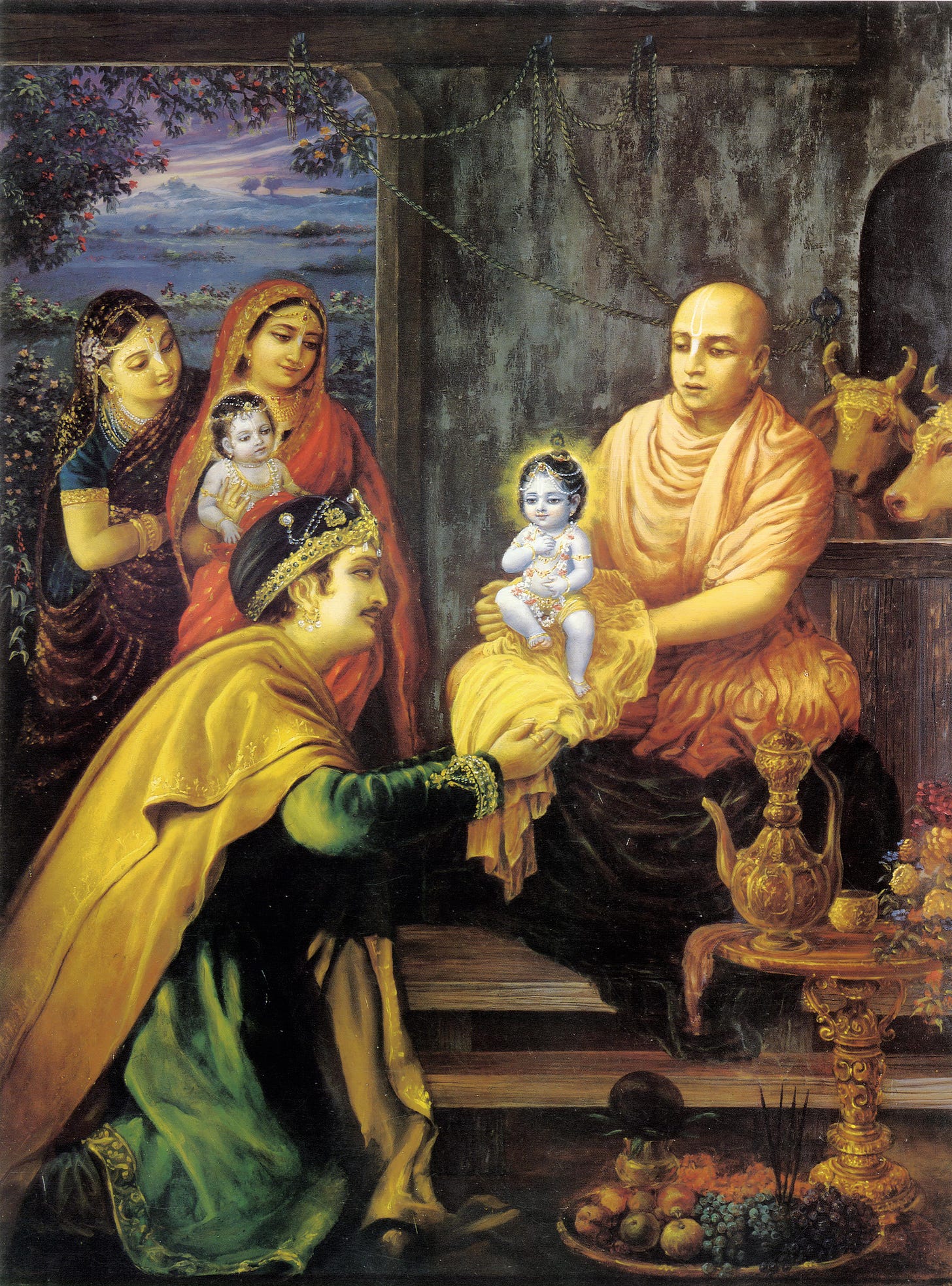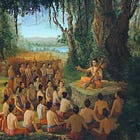The three aspects of the absolute
Different classes of transcendentalists have different ideas about God, as a formless spirit, localized or in a personal forṃ. Who is right? According to Srimad Bhagavatam, all of them
Different classes of transcendentalists have different ideas about God. To some (the impersonalists), God is a formless spirit that is eternal and transcendental to the material world. To others (the yogis), God has a form, situated inside the heart. For the devotee, however, God is a blue boy who plays the flute and cultivates loving relationships with His devotees. Who is right?
Well, according to Srimad Bhagavatam, all of them:
"Learned transcendentalists who know the Absolute Truth call this nondual substance Brahman, Paramātmā or Bhagavān."(SB 1.2.11)
At first, these three ideas may appear contradictory, but that's not the case. God has these three aspects simultaneously. The impersonal Brahmajyoti is just the effulgence of His body, Paramātmā is his localized aspect, present everywhere, while the Bhagavān aspect is the complete aspect of God as a person, who performs wonderful activities. Paramātmā also includes Brahman realization, while Bhagavān realization includes all three aspects simultaneously.
Prabhupada gives the example that Brahman realization is just like looking at a mountain from very far away and seeing just some haze covered by clouds. Paramātmā realization is like seeing the same mountain a little closer, where one can see the form of the mountain, but without much detail, while Bhagavān realization is comparable to someone going up the mountain and interacting with the people living there. In other words, although the absolute truth has these three aspects simultaneously, the Bhagavatam aspect is complete, including both Paramātmā and Brahman.
In his purport, Srila Prabhupada mentions that:
"Less intelligent students of either of the above schools sometimes argue in favor of their own respective realization, but those who are perfect seers of the Absolute Truth know well that the above three features of the one Absolute Truth are different perspective views seen from different angles of vision."
The main point of this verse is that devotional service is not just a process meant for sentimentalists, as often promoted by impersonalists, but actually the only perfect method to fully understand God. This is explained in the next verse:
"The seriously inquisitive student or sage, well equipped with knowledge and detachment, realizes that Absolute Truth by rendering devotional service in terms of what he has heard from the Vedānta-śruti." (SB 1.2.12)
By studying Vedic knowledge, one can develop knowledge and detachment. When one becomes successful in this study, he or she may come to the platform of devotional service, and when finally becoming successful in that, he may finally realize the absolute truth.
All other processes recommended in the Vedas, be it the cultivation of spiritual knowledge, renunciation, austerities, and so on, have actually just the goal of gradually elevating a person to the platform of devotional service. Therefore, if a person can somehow become situated in serving Krsna, it's concluded that he has already graduated in all the other processes, since he is already acting on a higher platform. If one achieves the goal, this means he already passed through all the previous stages.
If you read this article to the end, give it a like. This makes Substack recommend it to more people.
Read also:






Thank you prabhu ji for making the understanding of all three aspects of absolute truth in a very simple way 🙏
Thank you for this beautiful, clear and helpful explanation. 🙂